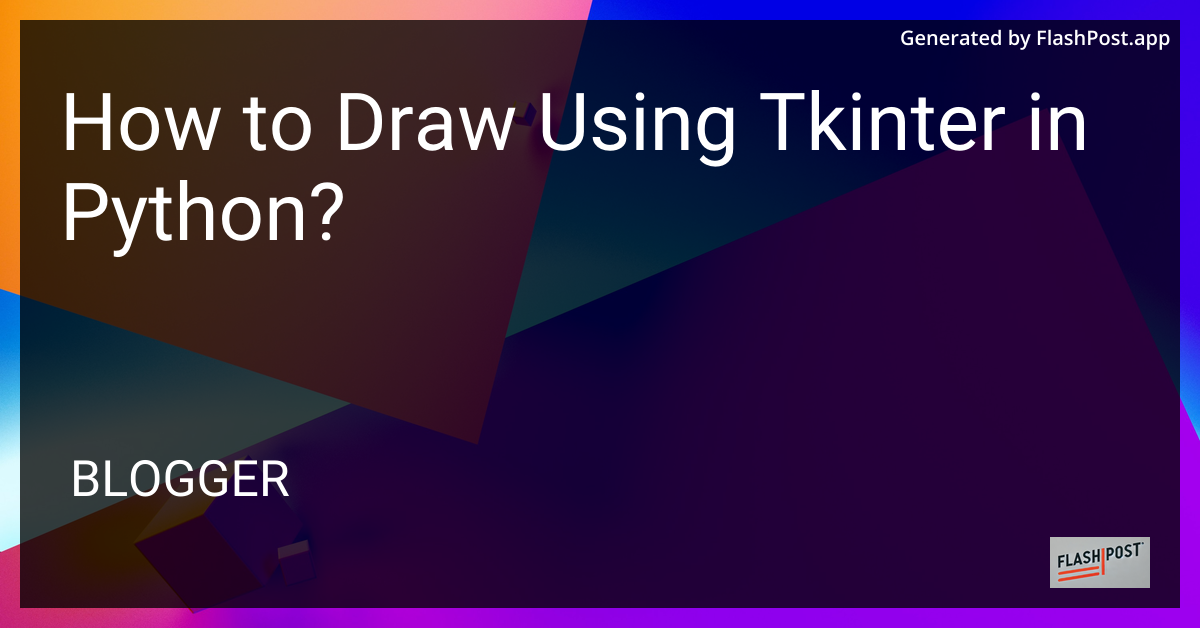How to Draw Using Tkinter in Python?

How to Draw Using Tkinter in Python
Drawing in Python is a delightful skill, especially when using Tkinter, one of the most popular and user-friendly GUI libraries available. This guide will walk you through the essentials of drawing with Tkinter, making it easy even for beginners.
Introduction to Tkinter
Tkinter is the standard GUI toolkit for Python. Simple yet powerful, it is the fastest route to creating applications with interactive interfaces. Whether you want to draw shapes or manage user input, Tkinter offers everything you need.
Setting Up Your Drawing Environment
To start drawing with Tkinter, you’ll first need to set up your environment. Make sure to have Python installed, and then proceed with the following steps:
import tkinter as tk
def create_canvas(root):
canvas = tk.Canvas(root, width=400, height=400, bg='white')
canvas.pack()
return canvas
root = tk.Tk()
canvas = create_canvas(root)
root.mainloop()
This code establishes a basic Tkinter window with a canvas you can draw on.
Drawing on the Canvas
Drawing involves creating shapes such as lines, rectangles, and ovals on the canvas. Here’s a quick example:
canvas.create_line(10, 10, 200, 200, fill='blue', width=2)
canvas.create_rectangle(50, 25, 150, 75, fill='red')
canvas.create_oval(100, 100, 300, 250, fill='green')
With these basic shapes, you can start to form more complex designs.
Advanced Drawing Techniques
Beyond basic shape drawing, consider these advanced techniques:
Prevent Text Overlap: Ensure clarity in your drawings by preventing text overlap.
Center Elements: Align your drawings precisely by understanding how to center frames.
Enhance Visuals: Add depth to your text with tips on how to color substrings.
Integrating Machine Learning with Tkinter
For those interested in combining machine learning with Tkinter, explore these resources:
Machine Learning Prediction Percentage: Learn how to calculate and display prediction accuracy.
Machine Learning Deployment Strategies: Seamlessly integrate ML models into your Tkinter applications.
Debugging Machine Learning on Windows: Essential tips for troubleshooting your ML applications.
Conclusion
With Tkinter, drawing becomes a straightforward and enjoyable task. Whether crafting simple shapes or integrating it with advanced machine learning models, Tkinter is a versatile choice for any Python programmer. Keep experimenting, and enjoy the creative process!
Don’t forget to explore more about the fascinating world of Tkinter and Python by visiting the linked resources. Happy drawing!
Comments
Post a Comment